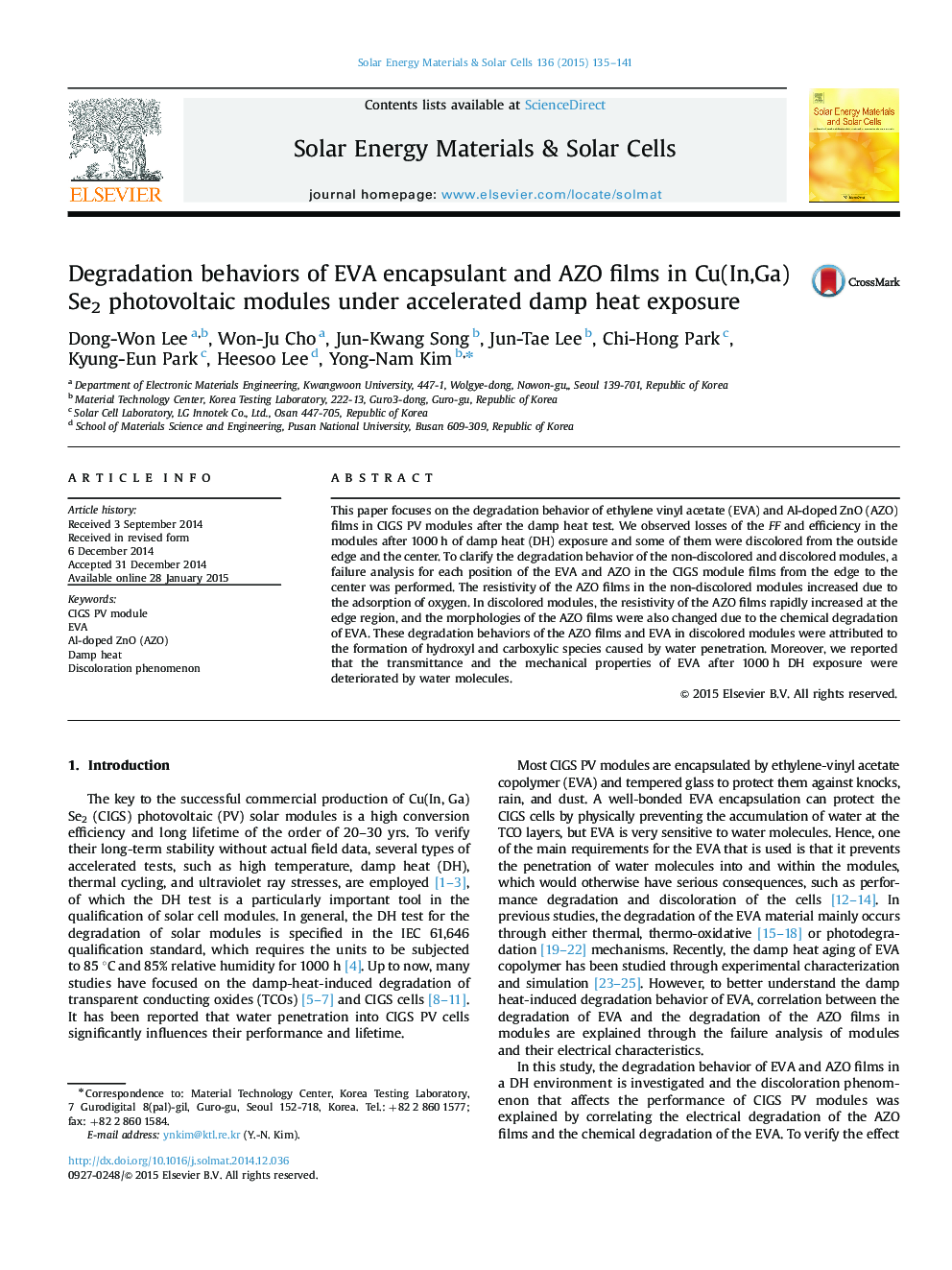| Article ID | Journal | Published Year | Pages | File Type |
|---|---|---|---|---|
| 77829 | Solar Energy Materials and Solar Cells | 2015 | 7 Pages |
•Discoloration and performance degradation of the module were observed after damp-heat exposure.•A failure analysis of the AZO films and EVA in the modules is performed to clarify these phenomena.•The resistivity of the AZO films in the non-discolored modules increased due to the adsorption of oxygen.•The resistivity of the AZO films in the discolored modules rapidly increased due to the chemical degradation of EVA.•The main cause of the degradation is the formation of hydroxyl and carboxylic species caused by water penetration.
This paper focuses on the degradation behavior of ethylene vinyl acetate (EVA) and Al-doped ZnO (AZO) films in CIGS PV modules after the damp heat test. We observed losses of the FF and efficiency in the modules after 1000 h of damp heat (DH) exposure and some of them were discolored from the outside edge and the center. To clarify the degradation behavior of the non-discolored and discolored modules, a failure analysis for each position of the EVA and AZO in the CIGS module films from the edge to the center was performed. The resistivity of the AZO films in the non-discolored modules increased due to the adsorption of oxygen. In discolored modules, the resistivity of the AZO films rapidly increased at the edge region, and the morphologies of the AZO films were also changed due to the chemical degradation of EVA. These degradation behaviors of the AZO films and EVA in discolored modules were attributed to the formation of hydroxyl and carboxylic species caused by water penetration. Moreover, we reported that the transmittance and the mechanical properties of EVA after 1000 h DH exposure were deteriorated by water molecules.
